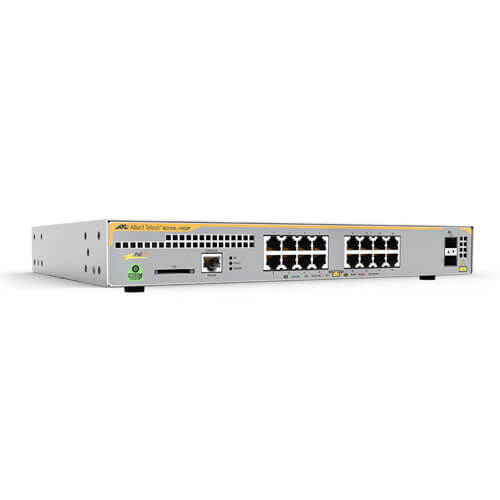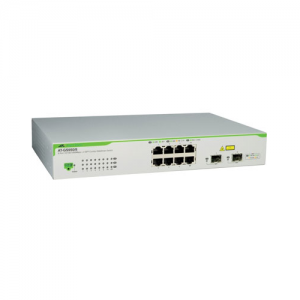Description
The Allied Telesis IE210L Series are wire-speed Layer 2 switches for industrial-lite Ethernet applications. With Power over Ethernet Plus (PoE+), and support for high operating temperatures of up to 65°C, IE210L switches tolerate the harsh and demanding environments found in industrial deployments.
These high-performing, cost-effective switches provide network managers with several key features, including port-based VLANs, IEEE 802.1p, QoS, port trunking/link aggregation, port mirroring, priority queues, and IEEE 802.1x security support.
With support for up to 16K MAC addresses, the IE210L Series is the ideal option for integrating management into any network solution.
Powerful network management
AMF meets the increased management requirements of modern converged networks, automating many everyday tasks including configuration management. AMF has powerful centralized management features that manage a complete network as a single virtual device. The network can be expanded with plug-and-play simplicity, and network node recovery is fully zero-touch. AMF secure mode increases network security with management traffic encryption, authorization, and monitoring. AMF Guestnode allows third-party devices, such as security cameras, to be part of an AMF network.
Secure
Network security is guaranteed, with powerful control over network traffic types, secure management options, and other multi-layered security features built right into the IE210L.
Network Access Control (NAC) gives unprecedented control over user access to the network, in order to mitigate threats to network infrastructure.
Allied Telesis IE210L switches use 802.1x port-based authentication, in partnership with standards-compliant dynamic VLAN assignment, to assess a user’s adherence to network security policies and either grant access or offer remediation. Tri-authentication ensures the network is only accessed by known users and devices, while secure access is also available for guests.
Security from malicious network attacks is provided by a comprehensive range of features, such as DHCP snooping, STP root guard, BPDU protection and Access Control Lists (ACLs). Each of these can be configured to perform a variety of actions upon detection of a suspected attack.






